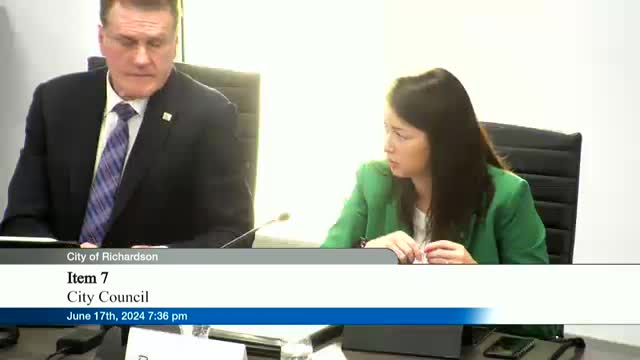City faces costly challenge over lead pipe regulations
June 17, 2024 | Richardson, Dallas County, Texas

This article was created by AI summarizing key points discussed. AI makes mistakes, so for full details and context, please refer to the video of the full meeting. Please report any errors so we can fix them. Report an error »

In a recent government meeting, officials discussed the ongoing challenges related to water meter replacements and the potential implications of new Environmental Protection Agency (EPA) guidelines concerning lead piping. The conversation highlighted the city's current efforts to replace outdated water meters, with all residential meters reportedly completed, while approximately 400 commercial meters remain to be replaced.
A significant concern raised was the identification of lead pipes within the city's infrastructure. Officials noted that around 12,000 meters are categorized as \"unknown,\" meaning the material of the pipes connected to these meters has not been confirmed. This uncertainty poses health risks, as lead pipes can contaminate drinking water. The city is currently working to verify the materials of these pipes, with initial estimates for this verification process projected at $500,000.
The discussion also touched on the potential ramifications of forthcoming EPA regulations, which may require the city to take responsibility for replacing lead or galvanized pipes on private property, extending from the water meter to the residence. This prospect raised concerns among council members about the financial and logistical implications of such a mandate, particularly regarding the disruption it could cause to homeowners' properties.
Council members expressed a desire to understand the extent of the city's responsibilities under the new guidelines and whether there is a precedent for such obligations in other utility scenarios. Some municipalities have already begun funding efforts to address lead pipe issues on private property, prompting discussions about whether the city should adopt a similar approach or advocate for a more balanced responsibility between public and private sectors.
As the city prepares for the potential changes in regulations, officials emphasized the importance of ensuring safe drinking water while also considering the financial and practical impacts on residents. The outcome of these discussions will likely shape the city's strategy moving forward as they await further guidance from the EPA.
A significant concern raised was the identification of lead pipes within the city's infrastructure. Officials noted that around 12,000 meters are categorized as \"unknown,\" meaning the material of the pipes connected to these meters has not been confirmed. This uncertainty poses health risks, as lead pipes can contaminate drinking water. The city is currently working to verify the materials of these pipes, with initial estimates for this verification process projected at $500,000.
The discussion also touched on the potential ramifications of forthcoming EPA regulations, which may require the city to take responsibility for replacing lead or galvanized pipes on private property, extending from the water meter to the residence. This prospect raised concerns among council members about the financial and logistical implications of such a mandate, particularly regarding the disruption it could cause to homeowners' properties.
Council members expressed a desire to understand the extent of the city's responsibilities under the new guidelines and whether there is a precedent for such obligations in other utility scenarios. Some municipalities have already begun funding efforts to address lead pipe issues on private property, prompting discussions about whether the city should adopt a similar approach or advocate for a more balanced responsibility between public and private sectors.
As the city prepares for the potential changes in regulations, officials emphasized the importance of ensuring safe drinking water while also considering the financial and practical impacts on residents. The outcome of these discussions will likely shape the city's strategy moving forward as they await further guidance from the EPA.
View full meeting
This article is based on a recent meeting—watch the full video and explore the complete transcript for deeper insights into the discussion.
View full meeting
